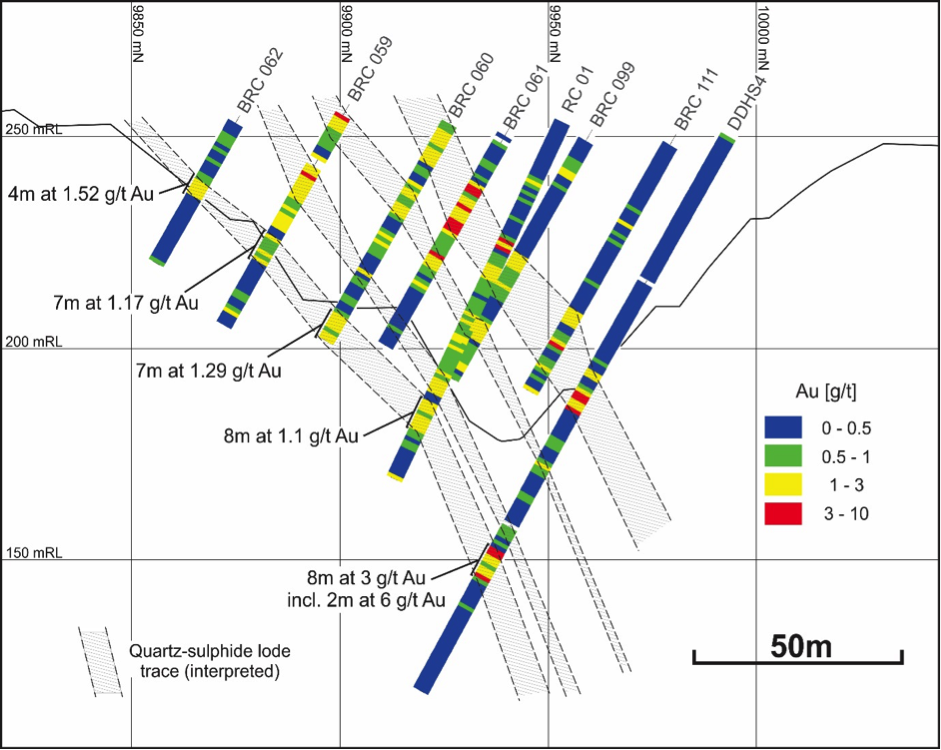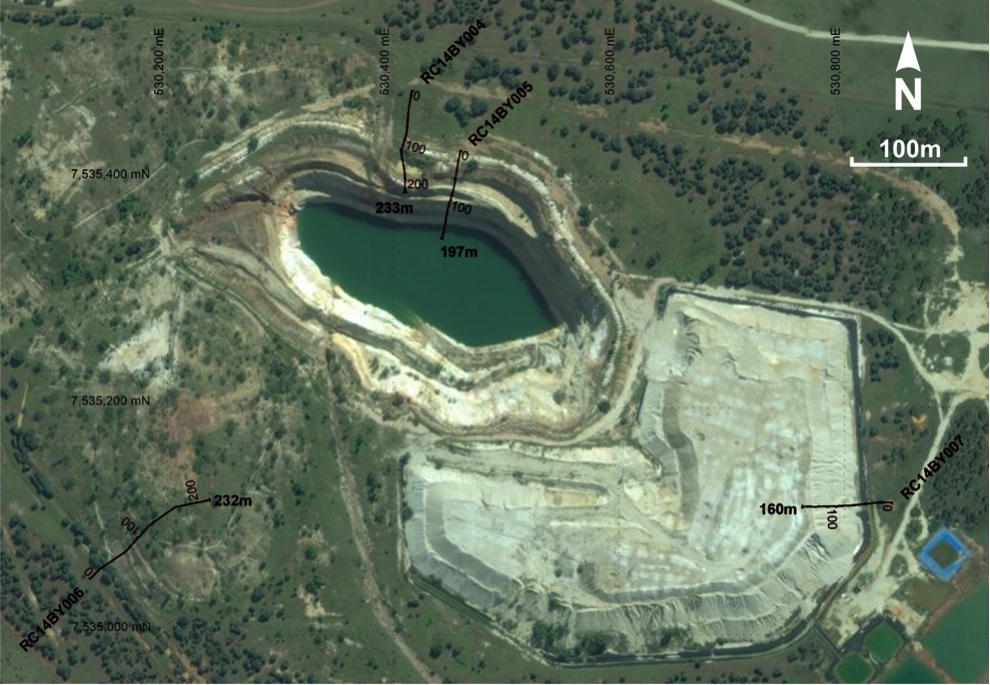





The Belyando gold deposit is located 2.5 km northeast of Zamia’s Anthony molybdenum project, within Zamia’s EPM 15145 Mazeppa Extended. During the period 1989 – 1995, open-cut mining followed by carbon-in-pulp (‘CIP’) extraction and, later heap leaching, produced almost 86,000 oz gold (Mustard R, 1998, Belyando gold deposit; in Geology of Australian and Papua New Guinea Mineral Deposits, Eds D A Berkman and D H Mackensie, pp 707 – 7014).

The Belyando mine
The deposit consists of multiple gold lodes which plunge to the northwest. The deposit was mined to a depth of 50 – 60m. The lodes remain “open” down plunge.

Belyando drill section
In November 2014, Zamia completed the first phase of a drilling program to test the extent of gold mineralisation down-dip of the mined deposit. Two holes (RC14BY004 and RC14BY005) intersected gold-bearing rocks underneath the Belyando pit, including a 70m intersection averaging 0.7 g/t Au. Elevated gold assays of up to 0.5 g/t Au within hole RC14BY007 reveal a previously unknown south-east extension to the Belyando gold system.

Location of RC holes on aerial photo image of the Belyando open-cut mine
Zamia’s exploration targets at Belyando are: